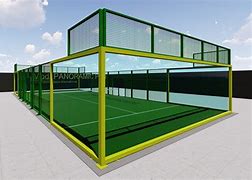

Padel and Tennis A Comparative Exploration of Two Exciting Racket Sports
Racket sports have long captivated audiences and players around the world, but two games that have gained remarkable popularity in recent years are padel and tennis. Though they share some similarities, the two sports possess distinct characteristics that set them apart and cater to different preferences and styles of play. This article explores the origins, gameplay, equipment, and social aspects of padel and tennis, offering insight into why they both deserve a place in the hearts of sports enthusiasts.
Origins and Growth
Tennis has a storied history that dates back to the late 19th century in England. It was initially played on grass courts and quickly evolved into the highly competitive sport we recognize today, with various major tournaments such as Wimbledon and the US Open. Over the years, tennis has garnered an impressive following, with professional circuits drawing billions of viewers and amateur leagues flourishing worldwide.
On the other hand, padel is a relatively newer sport, originating in Mexico in the 1960s and later popularized in Spain and Latin America. Padel combines elements of tennis and squash, played on a smaller, enclosed court. It has gained traction particularly in Spain, where it is often considered the second most popular sport after football. The vibrant growth of padel has spread throughout Europe and is beginning to make its mark in countries like the United States and the UK.
Gameplay and Rules
Tennis is played on a larger rectangular court divided by a net, with players competing in singles or doubles formats. The game can be quite physically demanding, requiring quick reflexes, stamina, and agility. Points are won by hitting the ball over the net into the opponent’s court, with various rules governing serves, faults, and scoring. Tennis matches can range from casual games to grand slam finals that last several hours.

Padel, in contrast, is played on a smaller court surrounded by walls, which players can use to rebound the ball. This unique feature allows for a dynamic style of play, where rallies can be longer and strategy plays a crucial role. The scoring system in padel closely resembles that of tennis, but the emphasis on teamwork makes doubles partnerships essential. Padel is often viewed as more accessible and less physically demanding, making it an attractive option for players of all ages and skill levels.
Equipment
The equipment for both sports reflects their specific gameplay requirements. In tennis, players wield a solid racket, typically made of composite materials with a large, flat surface for powerful shots. Tennis balls are pressurized and designed for speed, contributing to the game’s dynamic nature.
Padel racquets are more compact and perforated, designed to enhance ball control and allow for spin. Padel balls are similar to tennis balls but are less pressurized, which contributes to a slower game pace that emphasizes finesse and strategic shot placement. The design differences in equipment highlight the contrasting mechanics and strategies involved in each sport.
Social Aspects
Beyond the physicality and competition, both padel and tennis offer vibrant social experiences. Tennis clubs and courts often foster community, hosting tournaments and recreational play that bring people together. Padel courts, often designed for social interaction, encourage a more relaxed atmosphere, where friends can enjoy matches while mingling.
In conclusion, padel and tennis, while distinct sports, share the common purpose of bringing people together through competition and camaraderie. Each sport offers unique gameplay experiences and opportunities for social engagement. Whether you prefer the grandeur of a tennis match or the spirited, engaging atmosphere of a padel game, both contribute to the rich tapestry of racket sports. As they continue to grow, there is ample space for both sports in the landscape of global athleticism.
High-Performance Industrial Flooring Solutions China Paddle Tennis Court for Sale
High-Performance Industrial Flooring Solutions Durable & Cost-Effective
Homogeneous Transparent Floor – Durable & Stylish Rubber Floor Solutions
Premium Homogeneous Transparent Floor for Durable & Stylish Spaces Rubber Floor Solutions
Premium Sports Floor Solutions Durable PVC Sports Floor & Rubber Floor for Gyms
Durable Rubber Composite Floor Premium Rubber Floor & Mats Solutions